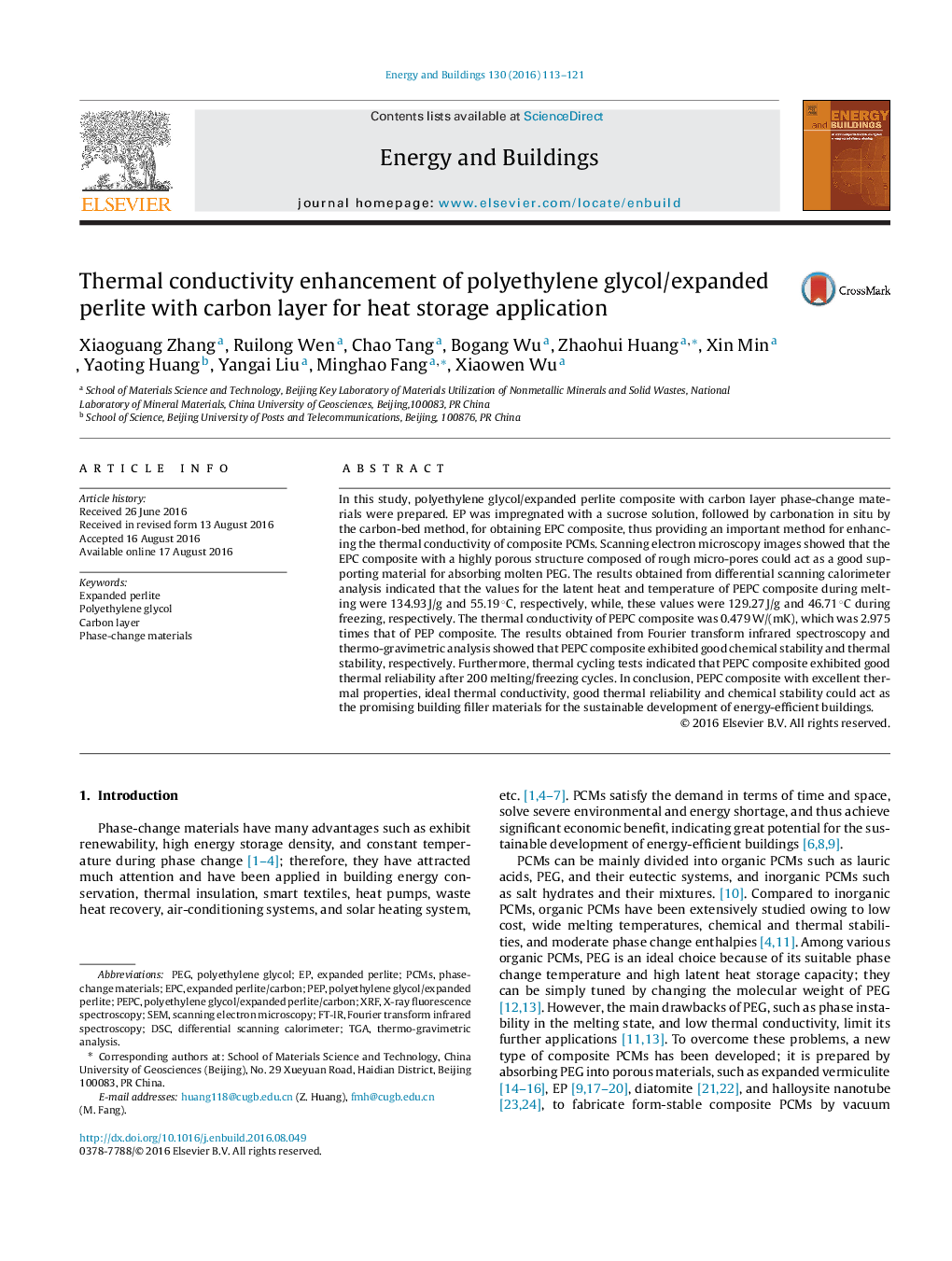| Article ID | Journal | Published Year | Pages | File Type |
|---|---|---|---|---|
| 4919580 | Energy and Buildings | 2016 | 9 Pages |
Abstract
In this study, polyethylene glycol/expanded perlite composite with carbon layer phase-change materials were prepared. EP was impregnated with a sucrose solution, followed by carbonation in situ by the carbon-bed method, for obtaining EPC composite, thus providing an important method for enhancing the thermal conductivity of composite PCMs. Scanning electron microscopy images showed that the EPC composite with a highly porous structure composed of rough micro-pores could act as a good supporting material for absorbing molten PEG. The results obtained from differential scanning calorimeter analysis indicated that the values for the latent heat and temperature of PEPC composite during melting were 134.93 J/g and 55.19 °C, respectively, while, these values were 129.27 J/g and 46.71 °C during freezing, respectively. The thermal conductivity of PEPC composite was 0.479 W/(mK), which was 2.975 times that of PEP composite. The results obtained from Fourier transform infrared spectroscopy and thermo-gravimetric analysis showed that PEPC composite exhibited good chemical stability and thermal stability, respectively. Furthermore, thermal cycling tests indicated that PEPC composite exhibited good thermal reliability after 200 melting/freezing cycles. In conclusion, PEPC composite with excellent thermal properties, ideal thermal conductivity, good thermal reliability and chemical stability could act as the promising building filler materials for the sustainable development of energy-efficient buildings.
Keywords
Related Topics
Physical Sciences and Engineering
Energy
Renewable Energy, Sustainability and the Environment
Authors
Xiaoguang Zhang, Ruilong Wen, Chao Tang, Bogang Wu, Zhaohui Huang, Xin Min, Yaoting Huang, Yangai Liu, Minghao Fang, Xiaowen Wu,
